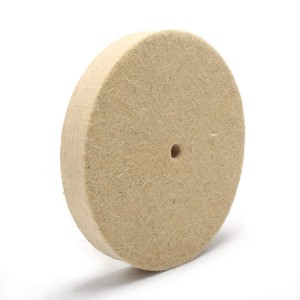The wool felt wheel industry is experiencing intense competition as numerous players strive for market dominance. At the same time, collaboration is emerging as a strategic approach to overcome challenges and drive innovation, shaping the future of this dynamic industry.
Large – scale manufacturers with extensive production facilities and global distribution networks are leveraging their economies of scale to offer competitive prices. They invest heavily in research and development to introduce new and improved wool felt wheel products, often with proprietary technologies. These companies focus on building strong brand identities, which gives them an edge in the market, especially when it comes to attracting large – volume buyers from industries such as automotive and electronics.
On the other hand, smaller, specialized manufacturers are carving out their niche by offering highly customized wool felt wheels. They cater to the specific needs of customers in niche markets, such as antique restoration, artistic crafts, and small – batch production. These companies often rely on their craftsmanship and in – depth knowledge of unique polishing requirements to differentiate themselves. Their ability to provide personalized solutions and quick turnaround times makes them attractive to customers who value quality and exclusivity over mass – produced options.
The competition in the wool felt wheel industry is not only about product quality and price but also about marketing and customer service. Companies are increasingly using digital marketing strategies, such as search engine optimization (SEO) and social media marketing, to increase their brand visibility and reach a wider customer base. Effective customer service, including prompt technical support and after – sales service, is also crucial for building customer loyalty and gaining a competitive advantage.
Amidst this competition, collaboration is becoming an important trend. Manufacturers are partnering with each other to share resources, expertise, and technology. For example, some companies are collaborating on joint research projects to develop new materials and manufacturing techniques for wool felt wheels. These partnerships can help reduce the cost and risk associated with innovation, allowing companies to bring new products to market more quickly.
Collaboration is also taking place between manufacturers and suppliers of related products, such as polishing compounds and power tools. By working together, they can develop integrated solutions that offer enhanced performance and convenience to customers. For instance, a wool felt wheel manufacturer might collaborate with a polishing compound supplier to create a bundled product that is specifically formulated to work optimally with their wheels.
Furthermore, industry associations and research institutions are playing a role in promoting collaboration. They organize conferences, workshops, and networking events where industry players can come together to share ideas, discuss challenges, and explore potential collaborations. These platforms facilitate the exchange of knowledge and the formation of partnerships that can drive the overall growth and development of the wool felt wheel industry.
In conclusion, the battle for market dominance in the wool felt wheel industry is a complex interplay of competition and collaboration. While competition fuels innovation and drives companies to improve their products and services, collaboration offers opportunities for shared growth and the development of more advanced solutions. As the industry continues to evolve, finding the right balance between competition and collaboration will be key for companies looking to succeed in this highly competitive market.

Post time: Jun-13-2025
